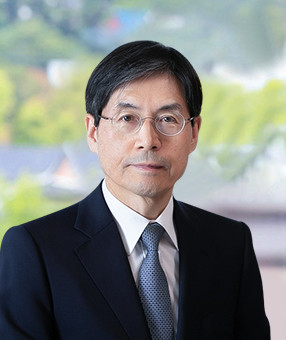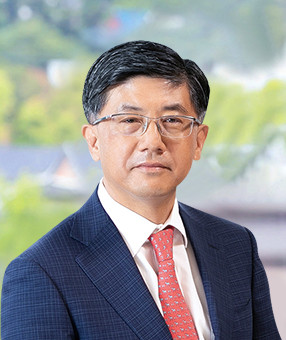On December 27, 2024, the National Assembly passed amendments to the Patent Act, the Utility Model Act, the Trademark Act and the Design Protection Act, which were promulgated on January 21, 2025 and will become effective on July 22, 2025.
A number of criticisms regarding certain provisions of the current Patent Act and Utility Model Act have been raised in recent years by certain parties, as follows:
-
Unlike the Trademark Act and Design Protection Act, the current Patent Act and Utility Model Act do not include “exporting” as an infringing act, which has led to concerns about the insufficient protection of rights holders;
-
The current acts contain no express provisions for sanctions against non-compliance with governmental orders restricting foreign patent filings or requiring secrecy in the case of inventions necessary for national defense, leading to concerns about enforcement; and
-
Korea does not currently provide for any cap on the total duration a pharmaceutical patent term can be extended, nor any limit on the number of patents that can be extended based on a single drug approval, unlike other major jurisdictions like the United States, Europe and China.
The current Trademark Act and Design Protection Act have also been criticized for the following reasons:
-
The current two-month period to file a trademark opposition after publication unduly disrupts the prompt granting of trademark rights, as although any third party can file an opposition, only about 1% of published trademark applications actually have oppositions filed against them.
-
The level of potential punitive damages for intentional infringement of trademark and design rights is currently not as high as it is for intentional infringement of patents and trade secrets.
|
1.
|
Amendments to Patent Act and Utility Model Act
|
(1)
|
Addition of “Exporting” as Act of Practicing Patented Inventions or Utility Models
Exports of products infringing patent rights or utility model rights can be blocked or be subject to administrative fines as unfair trade practices under the Customs Act or the Act on the Investigation of Unfair International Trade Practices and Remedy Against Injury to Industry before the Korea Trade Commission. However, unlike the Trademark Act and Design Protection Act, which specifically include “exporting” as an act of practicing trademarks or designs, the current Patent Act and Utility Model Act do not specify “exporting” as an infringing act. This has led to some issues in seeking damages or criminal penalties when enforcing patent rights in court against exporters of infringing products. By expressly adding “exporting” through this amendment, this ambiguity has now been resolved.
|
|
(2)
|
Limitation of PTE of Pharmaceutical Drug Patent to No More Than 14 Years From Date of Drug Approval and Number of Patents That Can Be Extended Based on Single Drug Approval to One Patent
Due to the unique nature of pharmaceutical patents, for which it is difficult to benefit from the full patent term due to the need for lengthy government approval of the patented drug before the drug can be marketed and sold, patent term extensions (“PTE”) have been provided as a way to compensate for some of this lost patent term. In Korea, a PTE of up to five years can be granted for pharmaceutical patents if the time necessary for the drug approval process prevents the practice of the patent.
However, other jurisdictions such as the US, China and Japan commonly have other restrictions on the grant of PTEs that Korea does not currently have, such as restrictions on the maximum length of time a patent can be extended or the number of patents that can be extended based on a single drug approval. There have been cases where generic pharmaceutical drugs have become available in overseas markets due to the expiration of foreign patent terms but remain unavailable in Korea due to the relevant PTE still being in force, which has led to the perception that generic drug launches in Korea have been unduly delayed.
The amended Patent Act therefore (i) sets an upper limit for patent terms so no patent can be extended for more than “14 years from the date of obtaining drug approval,” regardless of whether it is eligible for PTE beyond that limit, and (ii) limits the number of patents that can be extended based on a single drug approval to only one patent.
|
|
(3)
|
Addition of Criminal Penalty for Violation of Secrecy Order
The current Patent Act does not have an express penalty provision for violating a secrecy order (a government order that restricts foreign patent filing for an invention deemed necessary for national defense, or that otherwise requires an invention to be treated as confidential), unlike other countries, such as the US and Japan. The amended Patent Act addresses this issue by adding (i) a provision that imposes a potential punishment of imprisonment of up to five years or a fine of up to KRW 50 million against a person who violates a secrecy order, and (ii) a joint penalty provision that imposes a fine of up to KRW 100 million on a corporation or its representative that is obligated to manage and supervise the violator.
|
|
|
2.
|
Amendments to Trademark Act and Design Protection Act
|
(1)
|
Reduction of Trademark Application Opposition Period From Two Months to 30 Days After Publication of Application
Currently, anyone can file an opposition within two months of the date of publication of the application, if an examiner finds no reason to reject a trademark application and decides to publish the application. The amended Trademark Act shortens this period to “within 30 days” of the publication of the application.
|
|
(2)
|
Increase of Amount of Maximum Punitive Damages That Can Be Awarded for Intentional Infringement of Trademark and Design Rights
To better protect the rights of trademark and design right holders and exclusive licensees, the amended Trademark Act and Design Protection Act have increased the maximum punitive damages that can be awarded, from three times to five times the amount of actual damages.
|
|
Some of the recent amendments to the Patent Act, Utility Model Act, Trademark Act, and Design Protection Act strengthen the rights of IP holders in Korea. Adding “exporting” as an act constituting infringement of patent and utility model rights will likely make it easier to get injunctions on such exports and to increase damages by adding such exports to the relevant damages calculations. In addition, the increased maximum punitive damages for intentional infringement of trademark and design rights should create a stronger disincentive for violating such rights, while the shortening of the time available to oppose newly-published trademark applications should allow applicants to obtain rights more quickly overall.
However, the amended Patent Act also adds significant new limitations on PTEs that can be granted for pharmaceutical patents in Korea, without also addressing some of the areas in which PTE protection in Korea is narrower than in other countries. The new rules will require that pharmaceutical patentees adjust their patent strategies in Korea to maximize PTE protection or at least minimize any loss of exclusivity due to the changes.
[Korean Version]







